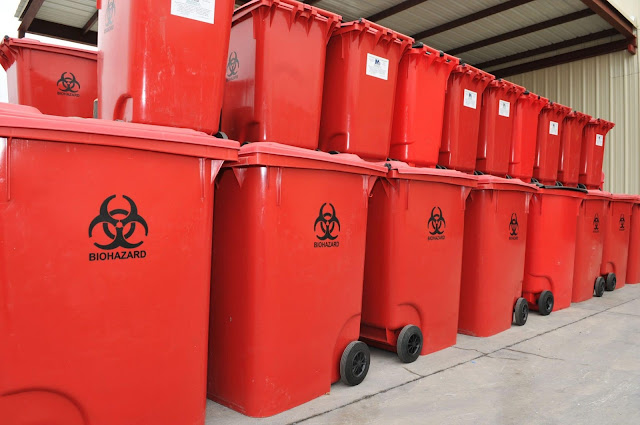Biohazardous Waste Disposal Methods and Technologies: Ensuring Safe and Efficient Practices in Florida
Proper disposal
of biohazardous medical waste is essential to protect public health and the
environment. In Florida, various methods and technologies are employed to
safely and efficiently manage this type of waste. This article will delve into
different disposal methods, such as autoclaving, incineration, microwave
treatment, and chemical disinfection, highlighting their benefits and
limitations in the context of biohazardous
waste disposal in Florida.
1.
Autoclaving:
Autoclaving is
a widely used method for treating biohazardous medical waste. It involves
subjecting the waste to high-pressure steam and elevated temperatures.
Autoclaves effectively sterilize the waste, eliminating pathogens and reducing
the overall volume.
Benefits:
- Provides
reliable sterilization, ensuring the destruction of pathogens.
- Reduces waste
volume, resulting in decreased storage and transportation costs.
- Allows for
the segregation of non-hazardous waste, contributing to waste minimization
efforts.
Limitations:
- Requires
proper waste segregation and packaging to ensure effective sterilization.
- May not be
suitable for certain materials, such as heat-sensitive plastics or certain
chemicals.
- Requires
sufficient infrastructure and trained personnel to operate and maintain
autoclave equipment.
2.
Incineration:
Incineration is
a thermal treatment method that involves burning biohazardous waste at high
temperatures. This process destroys pathogens, reduces the waste volume, and
converts it into ash and gas.
Benefits:
- Ensures
complete destruction of pathogens and hazardous materials.
- Offers
high-temperature burning, which can be effective for a wide range of waste
types.
- Produces
energy in the form of heat or electricity through waste-to-energy systems.
Limitations:
- May generate
air pollutants and greenhouse gas emissions, necessitating proper emission
control systems.
- Requires
strict regulatory compliance and permits due to environmental concerns.
- Can be
cost-intensive due to the high capital and operational costs of incineration
facilities.
3. Microwave
Treatment:
Microwave
treatment is an emerging technology that uses electromagnetic radiation to heat
and disinfect biohazardous waste. This method kills pathogens through heat
generated by the absorption of microwave energy.
Benefits:
- Provides rapid
and efficient disinfection, ensuring pathogen destruction.
- Minimizes
waste volume and weight, reducing storage and transportation requirements.
- Allows for
the treatment of a wide range of waste materials, including sharps and
laboratory waste.
Limitations:
- Requires
careful waste characterization and proper packaging to ensure uniform heating.
- Relatively
high initial investment costs for microwave equipment and infrastructure.
- Regulatory
approval and monitoring are necessary to ensure compliance and safety.
4. Chemical
Disinfection:
Chemical
disinfection involves using chemical agents, such as chlorine compounds or
hydrogen peroxide, to disinfect biohazardous waste. This method deactivates
pathogens, making the waste safe for disposal.
Benefits:
- Offers
effective pathogen inactivation, ensuring the elimination of microbial
contamination.
- Can be
suitable for a variety of waste types, including liquids, sharps, and
laboratory waste.
- Provides a
relatively simple and cost-effective method, especially for smaller healthcare
facilities.
Limitations:
- Requires
appropriate training and handling procedures to ensure safe chemical use.
- Proper waste
segregation is crucial to prevent chemical reactions or neutralization.
- Some chemical
disinfectants may pose environmental risks if not managed properly.
Conclusion:
Biohazardous
waste disposal in Florida necessitates the use of various methods and
technologies to ensure safe and efficient practices. Autoclaving, incineration,
microwave treatment, and chemical disinfection are among the commonly employed
techniques. Each method has its own benefits and limitations, requiring careful
consideration based on waste characteristics, regulatory compliance,
environmental impact, and cost considerations. By utilizing these disposal
methods effectively and adhering to best practices, healthcare facilities and
waste management services in Florida can contribute to the protection of public
health and the environment.

Comments
Post a Comment